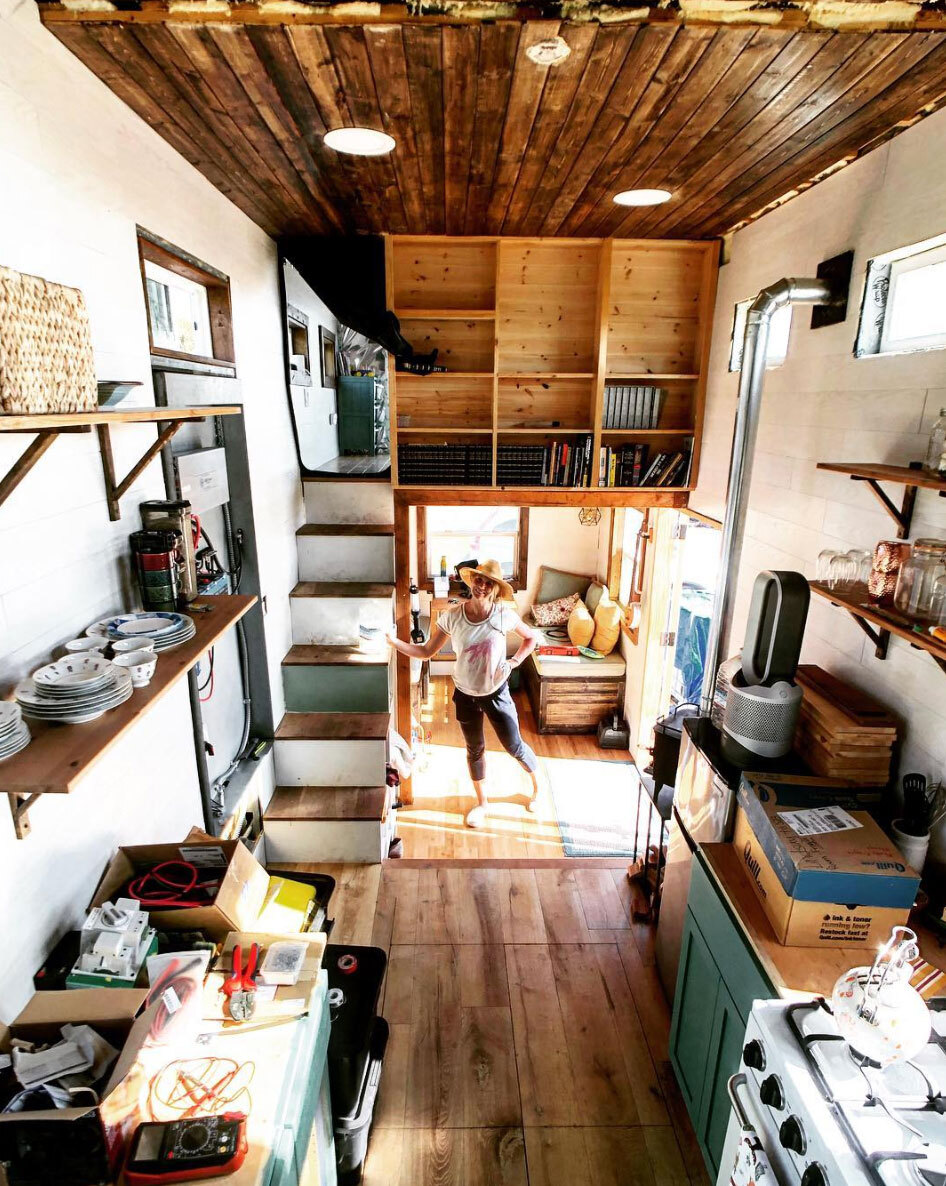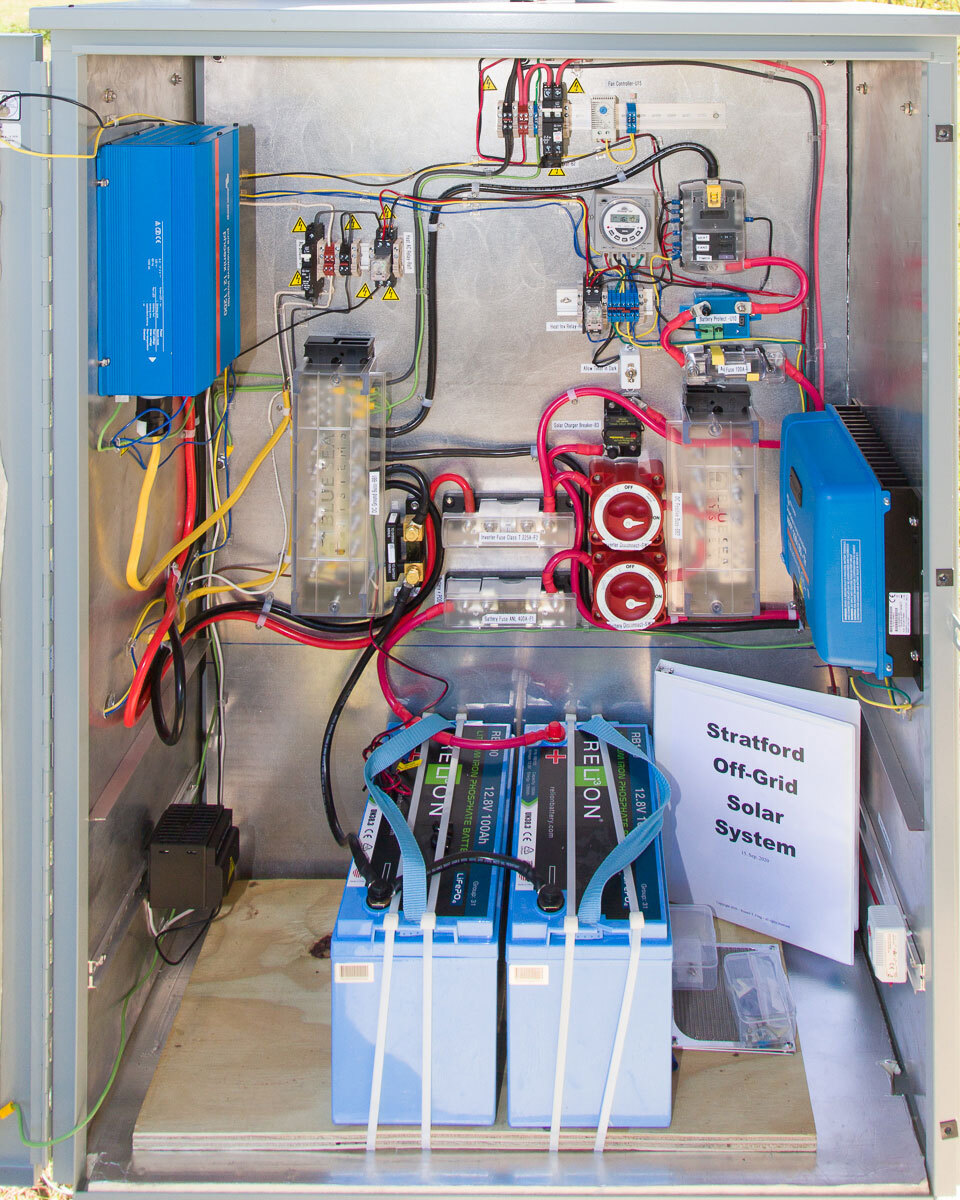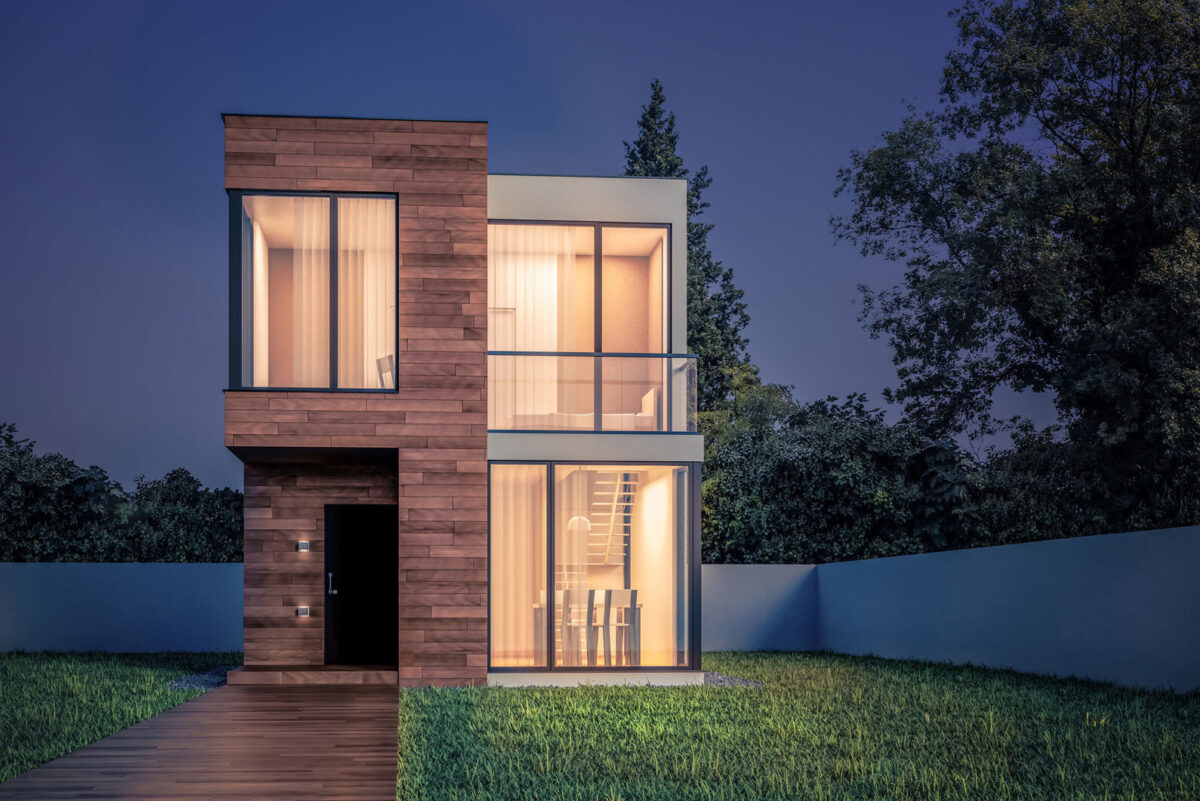Transitioning to a tiny home can be daunting. Downsizing and determining your own power source are just a few of the big shifts that you’ll have to adjust to when taking the leap into tiny home living. Once you do though, you’ll be able to save money, move easily from place to place, and drastically reduce your carbon footprint. Particularly if you decide to live in an off-grid tiny house, you will be able to reap many benefits: you can rely on your own banked power during an outage when the grid goes down and you also don’t have to pay price hikes during periods of high use. In the long run, having an off-grid tiny home can save you hundreds, or even thousands, in costs each year. For all of these reasons and more, people are flocking to this alternative lifestyle. In fact, a recent survey showed that 56 percent of over 2,000 Americans surveyed reported that they would consider living in a tiny home.
Before taking the leap though, here are some steps on how to power a tiny home to make sure you get the most out of your new lifestyle.
- Check out local guidelines and the National Electrical Code
- Outfit your tiny home with energy efficient options
- Assess your energy needs
- Choose and install your power system

Check out local guidelines and the National Electrical Code
Before anything, make sure you read the recommended guidelines, especially if you will be DIY-ing your power system. These rules can save you a lot of hassle in the long run by preventing issues before they happen. For example, unsafe electrical wiring can lead to fire hazards and other dangerous situations.
If you are worried about following the regulations correctly, you can always hire an electrician for a consultation of your tiny home.
Outfit your tiny home with energy efficient options
Even little things can make a big difference when relying on off-grid power. Switching lights to LED bulbs, using countertop devices - like induction cooktops - instead of energy-dense ovens, programming a thermostat instead of leaving air conditioning running 24/7, and checking that ducts are sealed are just a few good practices to minimize wasted energy. For example, induction cooking has been found to be one of the most efficient cooking technologies. With this technology, up to 90% of the energy consumed is transferred to the food, compared to about 74% for traditional electric systems and 40% for gas.
Assess your energy needs
Conduct an assessment of which appliances you use and how much you use them. You can use this to calculate roughly how much energy you will need to produce each day to power your needs. Most tiny homes use a 120-volt circuit. Start by calculating how much your various appliances need every day. For example, if you have a TV that uses 30 watts, and you watch TV for five hours a day, you will need 150 watt hours per day for the TV. Watt-hours, or power over time, are used for energy measurement. Doing a full calculation of all of your appliances will show you how much energy you need per day. With this estimation, you can begin choosing a power system. Many often choose to work with a local solar and energy storage installer during this part of the process. To learn more about how to calculate your energy needs and find the optimal battery for your application and usage, visit our Lithium Battery Selector Tool. You can also contact a RELiON representative if you need support calculating your energy needs.

How to Choose and Installing Your Tiny Home Power System
Tiny homes can be on-grid or off-grid, but off-grid allows for greater autonomy. For on-grid power systems, you can connect a powerful extension cord to funnel energy into your tiny home.
With off-grid power systems, you will have a greater freedom for the location of your tiny home. When living off-grid, you can power your home by either solar-plus-storage powered systems or diesel or gas generators. While fossil-fuel based generators may be tempting for some because they may appear less expensive at face value, they are often high maintenance, heavy, polluting and loud. Some campgrounds and RV parks even ban them to maintain peacefulness for other visitors.
Alternatively, solar-plus-storage power systems offer clean and safe energy production for your tiny home long-term and without the need for constant refueling and maintenance. When paired with batteries, solar power systems can afford users the ability to access clean electricity even when the sun isn’t out. This option is widely popular among people living in tiny homes because it is a cost effective and natural energy solution. Many tiny home owners, like Matt, have selected to pair their solar systems with RELiON batteries due to their small footprint, the peace and quiet they provide, as well as the fact that they use the safest, most environmentally benign lithium battery chemistry.
With the power calculations from Step Two above, you can determine how many solar panels you will need to put on your tiny home. The energy produced by a single panel can range from between .170 kWh and .350 kWh, and most tiny homes can operate with 15 solar panels. However, these are just rules of thumb and it’s always best to perform a thorough energy use assessment and base your solar array purchase off of this calculation.
In order to access the solar energy at night, your off-grid solar power system must be equipped with solar panels, an inverter, a charge controller, and a battery storage system. Your battery storage will be a key part to your power needs. Instead of excess energy from your solar power system being lost, you can store it in a battery bank. On days when there isn’t enough sunlight or there is a major storm, you can rely on stored power. These solutions help you be as energy independent as possible and offer huge cost savings as well.
Reliable battery solutions are key to the longevity of your power system. Lithium batteries offer the best performance and longest lifespan of any battery on the market. When paired with solar power systems, lithium batteries are the most efficient option and offer deep discharge capabilities without damaging the batteries. RELiON offers lithium batteries made specifically with solar power in mind to provide customers with a worry-free energy storage system that can keep up with their off-grid lifestyle.
Tiny homes can offer you great versatility in terms of where you choose to live and can help you drastically cut down on your electricity bill - all while simplifying your life. Choosing which power system for your tiny home can seem like a daunting decision though, especially if it’s your first time living off-grid. Feel free to contact an expert at RELiON today for help with sizing your tiny home’s energy system.
